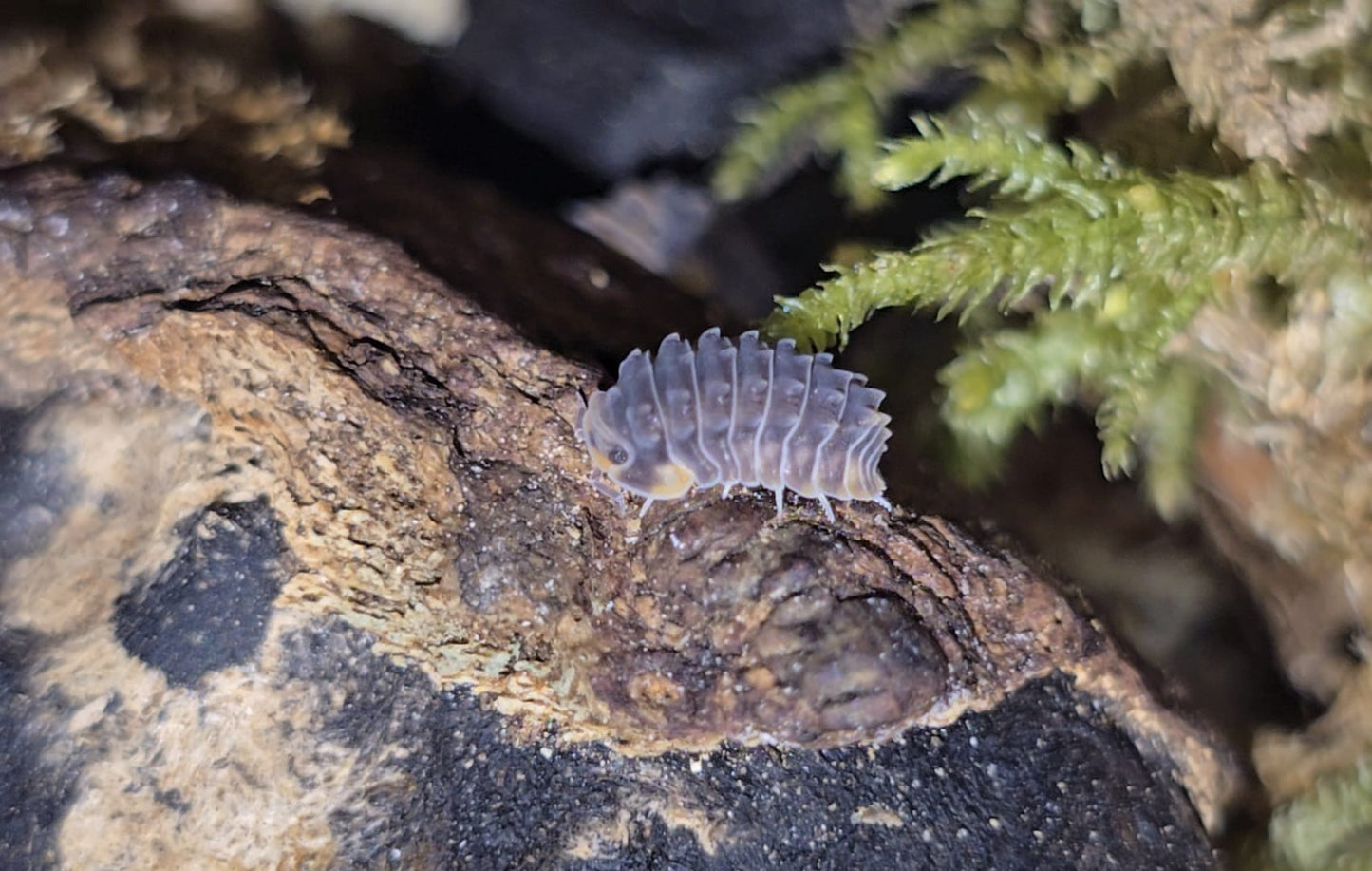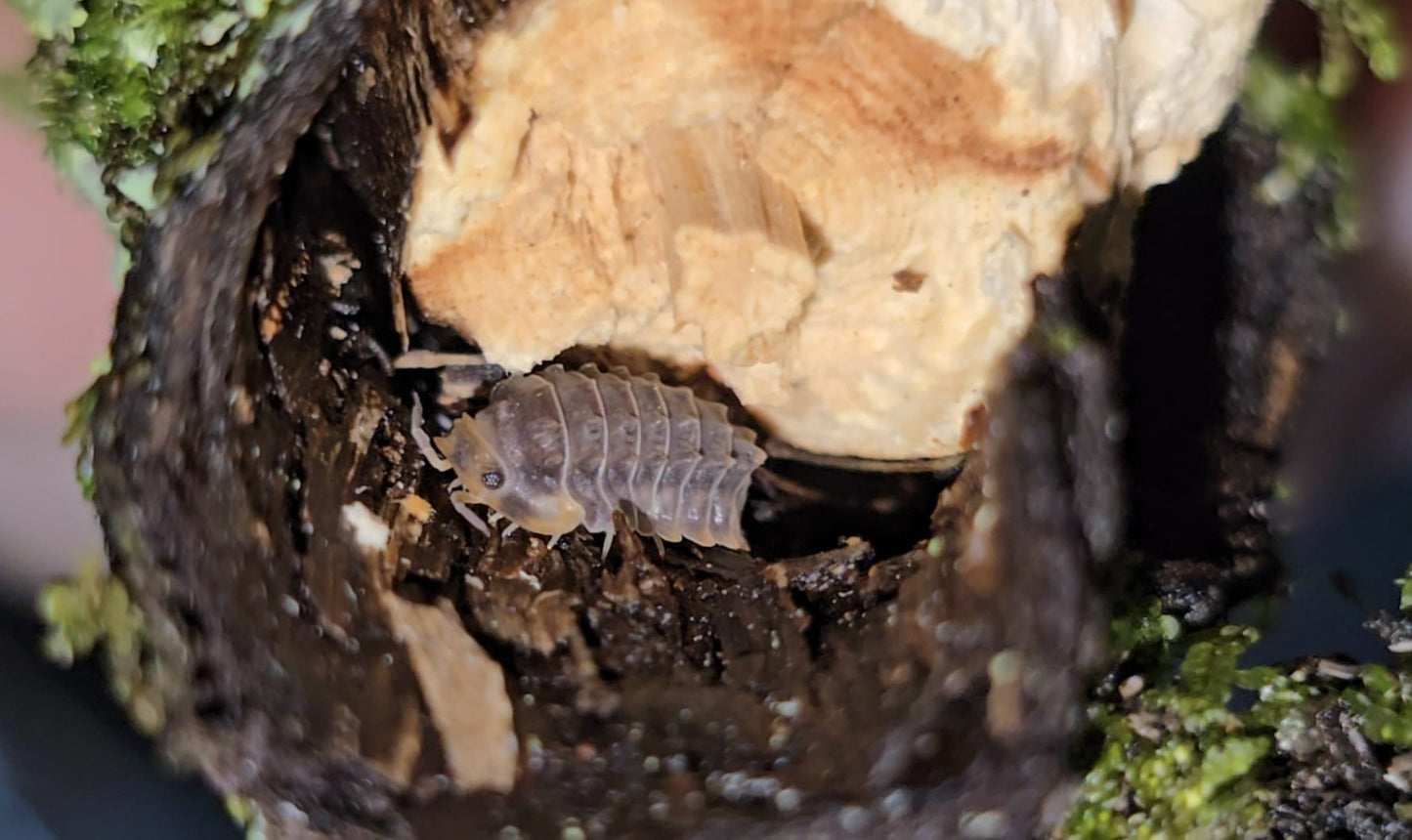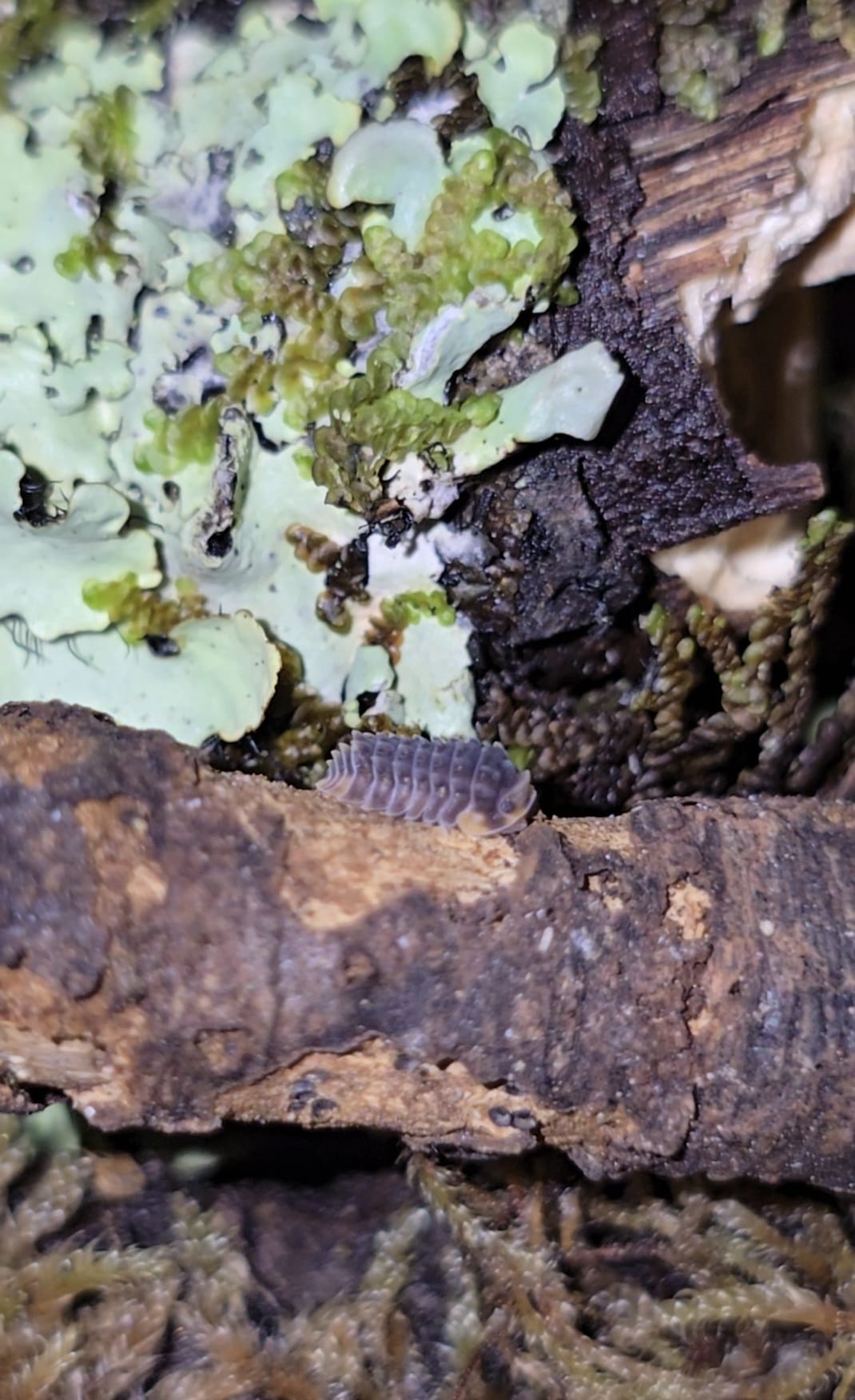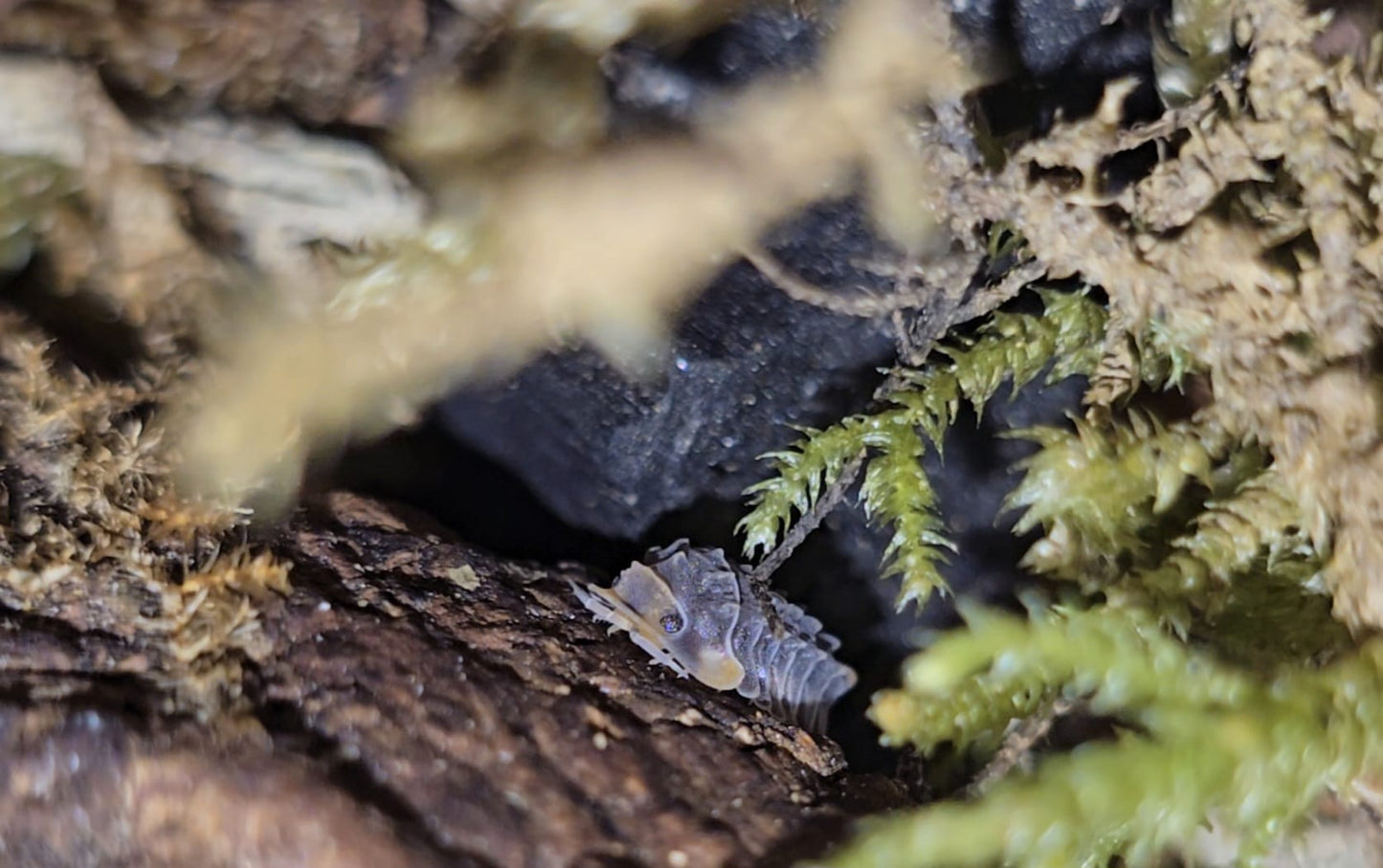PostPods
Isopoda sp. Shiny gator Isopods
Isopoda sp. Shiny gator Isopods
Couldn't load pickup availability
Keeping Shiny Gator Isopods as pets offers an exciting experience to those who prefer exotic creatures. An excellent addition to any isopod collection, Shiny Gator Isopods is popular because of their unique appearance and easy care requirements, which keepers prefer. Although small, Shiny Gator Isopods are not shy, making them a fascinating species. A gem of a species and full of character is Shiny Gator isopods.
Shiny Gator Isopods: A Glimpse
-
Origin: Thailand
-
Scientific Name: Isopoda sp
-
Difficulty: Easy
-
Rarity: Highly sought-after
-
Temperature: 21–26°C
-
Size: 3.8 mm to 6 mm
-
Humidity: Medium
-
Favorable Foods: Decaying wood, leaf litter, mango, carrots, limestone, cuttlefish bone, and fish food
An Overview
Native to Thailand, these small, dwarf creatures are Shiny Gator Isopods. Featuring a dark body, they have orange-red faces and rear ends, which make them look different from other isopod species. Adding to their uniqueness are raised nubs on their backs that look like spikes. Well, this is why these isopods are “Shiny Gator” because their bodies look like alligator skin.
Free-moving creatures, Shiny Gator Isopods have two pairs of dark-tipped antennae. The lower pair of antennae are feelers, while the upper pair are chemosensory structures.
Measuring up to 3.8 mm and 6 mm, temperatures between 21°C and 26°C are essential for these isopods to grow and thrive. As for humidity, medium level is what they prefer. The attractive exoskeleton is why these isopods add a striking aesthetic to terrariums and vivarium.
Shiny Gator Isopods: Basic Care
Following these tips helps you to take good care of your isopods.
-
Stable humidity and temperature levels are essential for your isopods to grow and reproduce.
-
The ideal temperature range is between 21°C and 26°C, so maintain the same for the well-being of your isopods.
-
Providing proper ventilation and a balanced diet helps enhance their overall health.
-
Create ample hiding spots using decaying wood and leaf litter, which mimics their natural habitat and provides them with shelter.
-
Monitor the enclosure regularly so you know everything is fine.
Shiny Gator Isopods: Feeding
A diverse diet is what Shiny Gator Isopods need to stay healthy. To ensure your isopods get proper nutrition, provide them with decaying wood and leaf litter, a staple in their diet. For vitamins, feeding mangoes and carrots is a good choice. Provide limestone and cuttlefish bone for calcium because it is good for their exoskeleton. A good protein source is fish food, as it enhances growth and reproduction. Providing all necessary nutrients leads to a thriving and active colony.
Shiny Gator Isopods: Appearance And Behaviour
-
The body color is dark, and the raised nubs on the back look like alligator skin.
-
The face and rear ends are orange or red, giving them a striking appearance.
-
Features two pairs of dark-tipped antennae, which they use for finding their way, monitoring moisture, and sensing chemicals.
-
Free-moving creatures are Shiny Gator Isopods but roll up when a threat is near.
-
Social creatures, Shiny Gator Isopods are not overly aggressive and coexist well in colonies.
Shiny Gator Isopods: Habitat
Creating the perfect habitat for Shiny Gator Isopods requires you to mimic their natural environment so they stay healthy and happy. A well-ventilated enclosure with a proper moisture gradient is essential for their well-being. Include a dry and slightly humid area in the habitat to cater to their needs. Create hiding spots with bark, moss, and leaf litter as it provides them shelter and security. Use moisture-retaining and well-draining materials in the substrate. This way, you can maintain the ideal conditions for your isopods.
Shiny Gator Isopods: Substrate Mix
Shiny Gator Isopods need a well-prepared substrate mix to stay healthy and live longer. The ideal substrate consists of coconut fiber, decaying wood, and leaf litter. These items help maintain the right humidity levels within the enclosure. For moisture retention, use sphagnum moss. Other necessary supplies include crushed limestone and cuttlefish bone, which is good for their shell development.
Share







